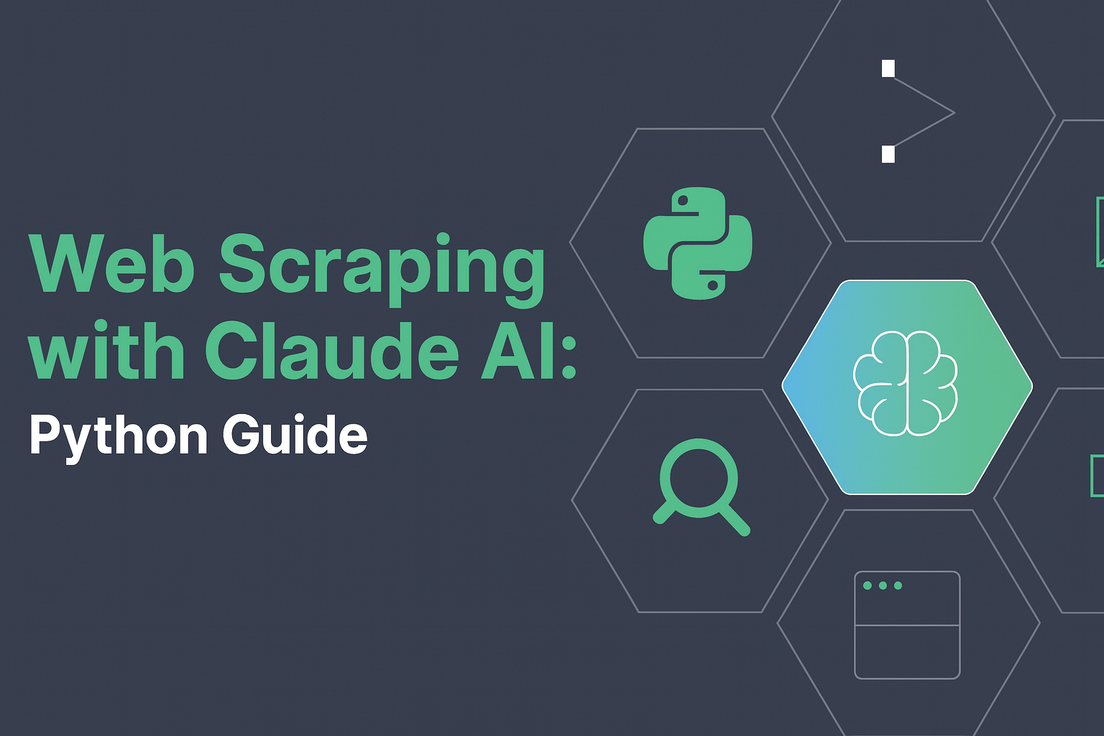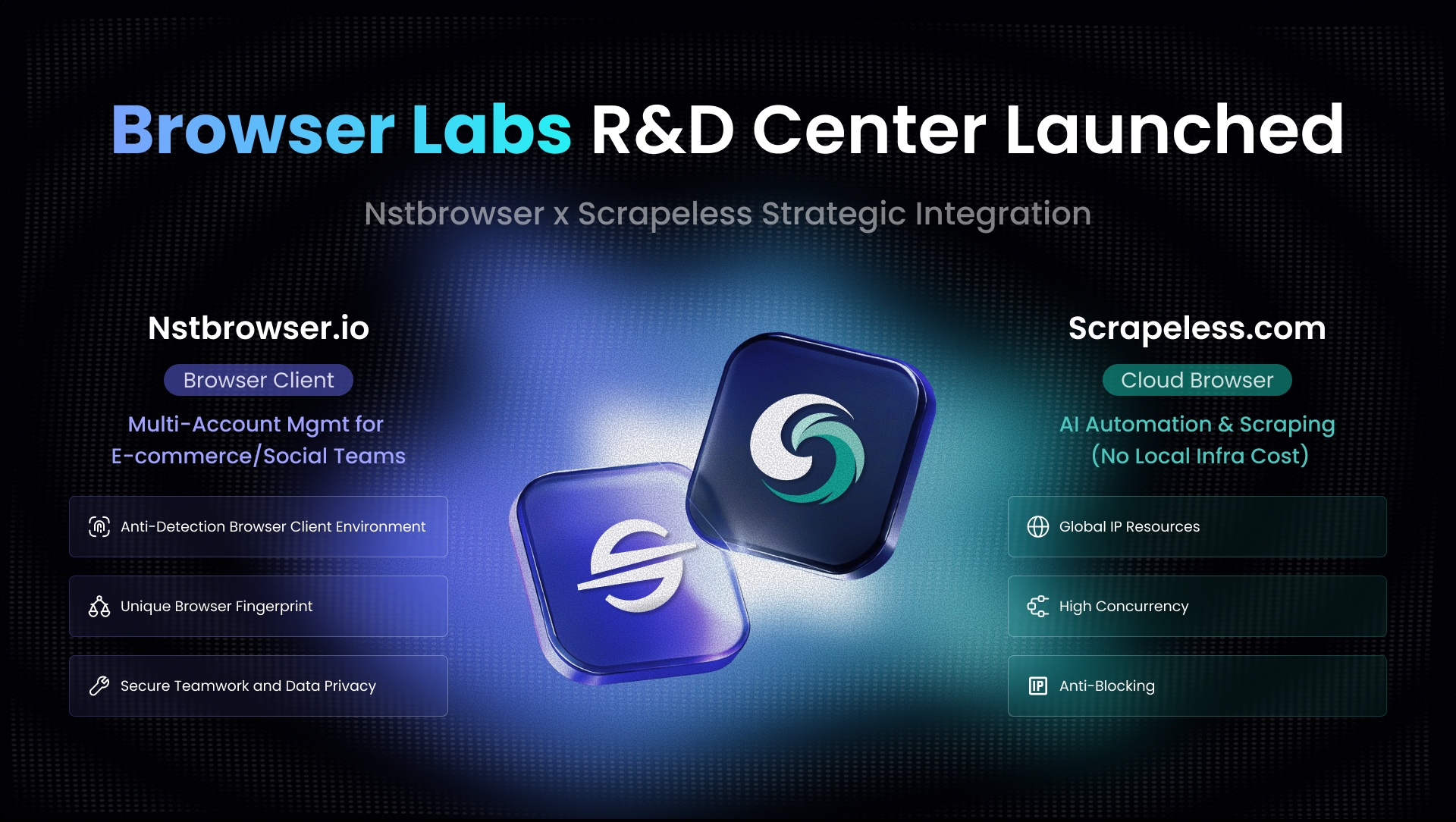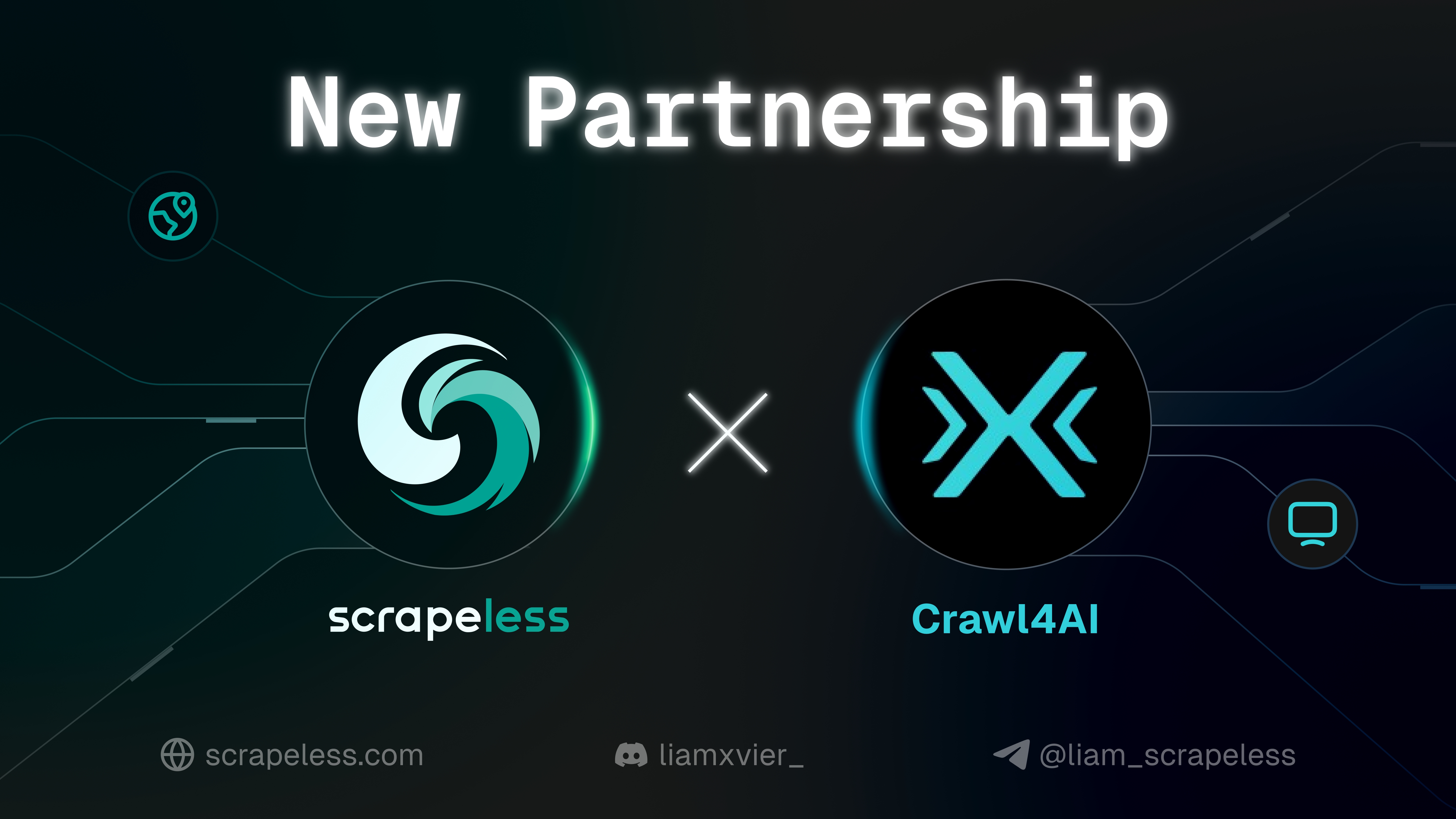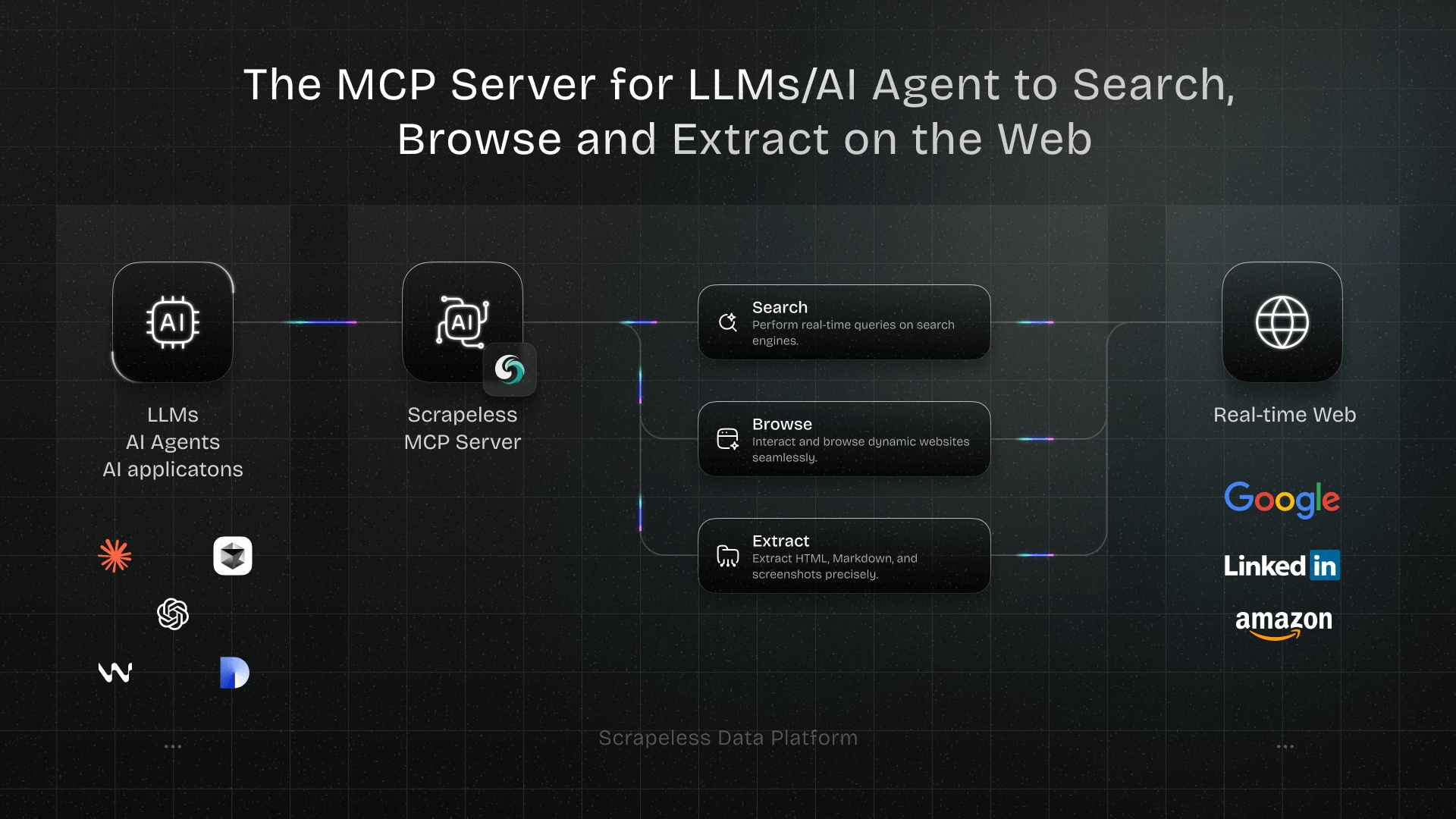Web Scraping with Claude AI: Python Guide
Expert Network Defense Engineer
Key Takeaways
- Use dedicated scraping tools to fetch web pages.
- Use Claude AI to analyze or summarize scraped data.
- Scrapeless Browser is the top pick for scale and anti-bot challenges.
- Python integrations include Playwright, Scrapy, and Requests + BeautifulSoup.
Introduction
This guide shows practical ways to do web scraping with Claude AI using Python. The conclusion first: use a robust scraper to collect data, then use Claude for downstream analysis. The target readers are Python developers and data engineers. The core value is a reliable, production-ready pipeline that separates scraping from AI analysis. We recommend Scrapeless Browser as the primary scraping engine because it handles anti-bot protections and scales well.
Why separate scraping and Claude AI
Scraping and AI have different roles. Scrapers fetch and render pages. Claude analyzes, summarizes, and extracts meaning. Keeping them separate improves stability. It also makes retries and auditing easier. Anthropic documents Claude's developer platform and analysis features. Claude Docs.
Top 10 methods to acquire data (with code)
Below are ten practical solutions. Each has a short Python example.
1) Scrapeless Browser (recommended)
Scrapeless Browser is a cloud Chromium cluster. It manages concurrency, proxies, and CAPTCHAs. Use it when pages are protected or JavaScript-heavy. See product details: Scrapeless.
Why choose it: built-in CAPTCHA solving, session recording, large proxy pool.
When to use: large-scale scraping, anti-bot pages, agent workflows.
2) Playwright for Python
Playwright automates full browsers. It handles modern JS well. Official docs cover setup and APIs. Playwright Python.
Example:
python
from playwright.sync_api import sync_playwright
with sync_playwright() as p:
browser = p.chromium.launch(headless=True)
page = browser.new_page()
page.goto('https://example.com')
print(page.title())
browser.close()When to use: dynamic pages where you control browser behavior.
3) Selenium + undetected-chromedriver
Selenium is mature and multi-language. Use undetected-chromedriver if basic detection appears.
Example:
python
from selenium import webdriver
from selenium.webdriver.chrome.options import Options
opts = Options(); opts.headless = True
driver = webdriver.Chrome(options=opts)
driver.get('https://example.com')
print(driver.title)
driver.quit()When to use: testing or legacy automation tasks.
4) Scrapy with Playwright integration
Scrapy is a crawler framework. It scales well for many pages. Use its Playwright middleware for JS pages. Scrapy Docs.
Example (spider snippet):
python
# settings.py: enable Playwright
# SPIDER code
from scrapy import Spider
class MySpider(Spider):
name = 'example'
start_urls = ['https://example.com']
def parse(self, response):
title = response.css('title::text').get()
yield {'title': title}When to use: large crawl jobs with pipelines and scheduling.
5) Requests + BeautifulSoup (static pages)
This is the simplest stack. It works for static HTML.
Example:
python
import requests
from bs4 import BeautifulSoup
r = requests.get('https://example.com')
soup = BeautifulSoup(r.text, 'html.parser')
print(soup.select_one('h1').get_text())When to use: static pages or APIs that return HTML.
6) Requests-HTML / httpx + pyppeteer
Requests-HTML provides JS rendering through pyppeteer. Use it when you want simple rendering inside requests-like API.
Example:
python
from requests_html import HTMLSession
session = HTMLSession()
r = session.get('https://example.com')
r.html.render() # runs a headless browser
print(r.html.find('title', first=True).text)When to use: quick scripts that need limited JS execution.
7) Pyppeteer (headless Chrome control)
Pyppeteer mirrors Puppeteer in Python. It's useful if you prefer a Puppeteer-style API in Python.
Example:
python
import asyncio
from pyppeteer import launch
async def main():
browser = await launch()
page = await browser.newPage()
await page.goto('https://example.com')
title = await page.title()
print(title)
await browser.close()
asyncio.get_event_loop().run_until_complete(main())When to use: Puppeteer-like control in Python.
8) Splash (rendering service)
Splash runs a lightweight browser in Docker. It exposes an HTTP render API.
Example:
python
import requests
r = requests.get('http://localhost:8050/render.html', params={'url': 'https://example.com'})
print(r.text)When to use: lighter weight rendering with scriptable Lua.
9) Proxy-first scraping (rotating proxy pools)
Large scraping needs IP rotation. Use a proxy pool to reduce blocks. Many providers offer REST proxies and residential IPs.
Python proxy example (requests):
python
proxies = {'http': 'http://user:pass@proxyhost:port'}
resp = requests.get('https://example.com', proxies=proxies)When to use: high-volume tasks where IP reputation matters.
10) Use Claude AI for post-processing (analysis, not scraping)
Do not couple Claude directly to your scraping engine. Instead, store raw results then call Claude for extraction, summarization, or classification. Anthropic provides developer docs for API usage. Claude Docs.
Example (post-scrape analysis):
python
# pseudo-code: send scraped text to Claude for summarization
import requests
scraped_text = '... large crawl output ...'
CLAUDE_API = 'https://api.anthropic.com/v1/complete' # check docs for exact endpoint
headers = {'x-api-key': 'YOUR_KEY'}
resp = requests.post(CLAUDE_API, json={'prompt': f'Summarize:\n{scraped_text}'}, headers=headers)
print(resp.json())When to use: data cleaning, entity extraction, or generating human summaries.
3 Real-world scenarios
- Price monitoring: Use Scrapeless Browser to render product pages. Store results daily. Use Claude to create human-readable change reports.
- Job aggregator: Use Scrapy with Playwright to crawl job sites. Normalize fields in pipelines. Use Claude to tag seniority levels.
- News sentiment: Use Playwright to pull article text. Use Claude to produce concise summaries for analyst dashboards.
Comparison Summary
| Method | Best For | JS Support | Captcha / Anti-bot | Ease of Python Use |
|---|---|---|---|---|
| Scrapeless Browser | Scale & anti-bot | Yes | Built-in | High |
| Playwright | Direct control | Yes | No (needs work) | High |
| Scrapy (+Playwright) | Large crawls | Yes | No | Medium |
| Requests + BS4 | Static sites | No | No | Very High |
| Splash | Lightweight rendering | Partial | No | Medium |
Citations: Scrapeless product pages and Playwright docs informed this table.
Best practices and safety
- Respect robots.txt and terms of service.
- Add delays and jitter between requests.
- Rotate user agents and proxies.
- Store raw HTML for audits.
- Limit rate to avoid hurting target sites.
Resources for scraping best practices: Scrapy Docs, Playwright Docs.
Recommendation
For production pipelines, use a robust scraper first. Then use Claude AI for analysis. For the scraping layer, we recommend Scrapeless Browser. It reduces fragility on protected pages and scales with your workload. Try it: Scrapeless Login
Internal reading on Scrapeless features: Scraping Browser, Scrapeless Blog.
FAQ
Q1: Can Claude run scraping tasks itself?
No. Claude is an analysis model. Use purpose-built browsers to fetch pages.
Q2: Is Scrapeless suitable for small projects?
Yes. It scales down but adds value when anti-bot protection appears.
Q3: Which Python tools are best for quick prototypes?
Use Requests + BeautifulSoup or Playwright for small prototypes.
Q4: How to store large scraped data?
Use object storage (S3) and a metadata database (Postgres).
Conclusion
Keep scraping and AI tasks separate.
Use Scrapeless Browser to fetch reliable data.
Use Claude AI to analyze and summarize the data.
Start a trial and sign up here: Scrapeless Login
External References (examples)
At Scrapeless, we only access publicly available data while strictly complying with applicable laws, regulations, and website privacy policies. The content in this blog is for demonstration purposes only and does not involve any illegal or infringing activities. We make no guarantees and disclaim all liability for the use of information from this blog or third-party links. Before engaging in any scraping activities, consult your legal advisor and review the target website's terms of service or obtain the necessary permissions.



